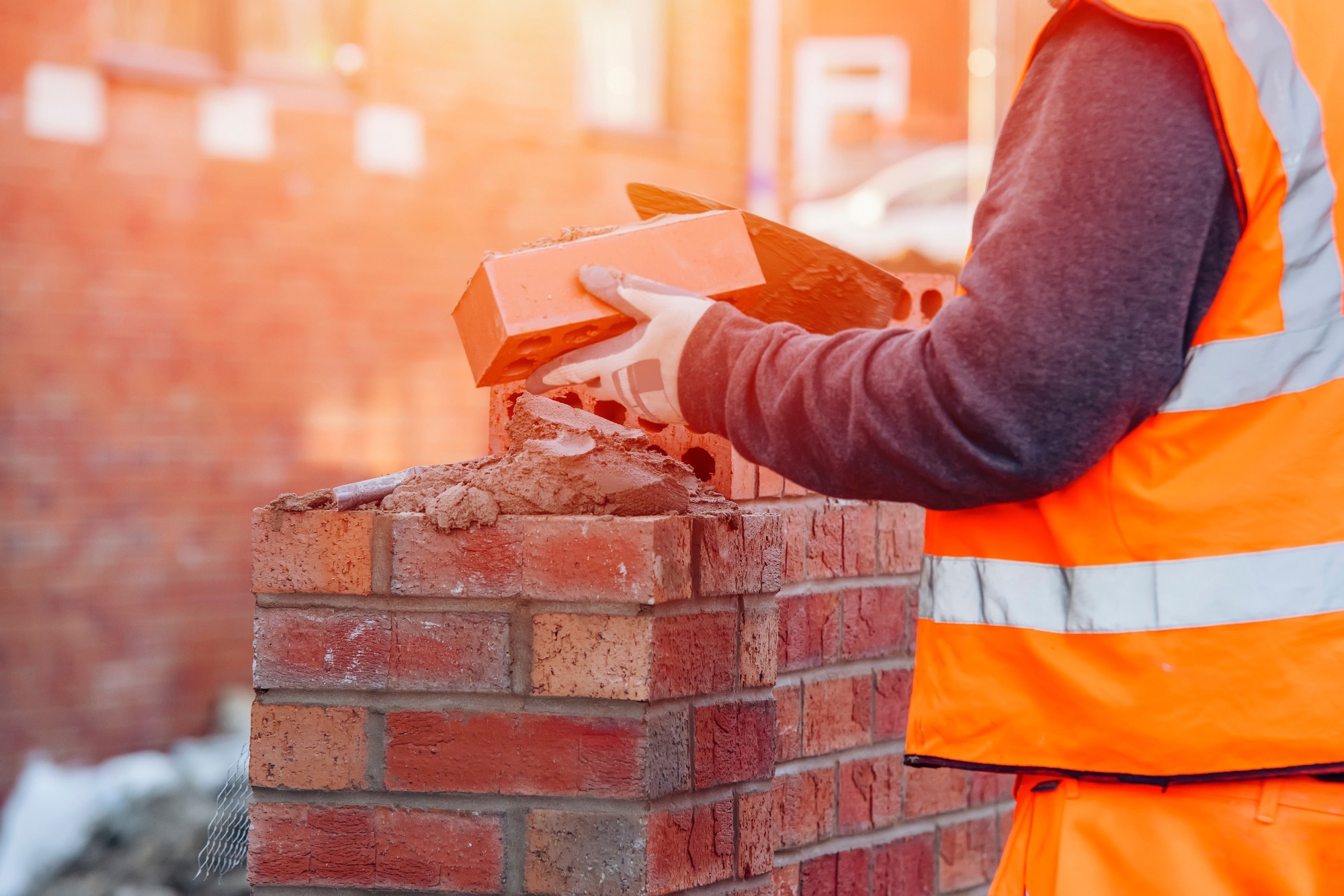 By Nidhi DhullReviewed by Susha Cheriyedath, M.Sc.Jun 26 2024
By Nidhi DhullReviewed by Susha Cheriyedath, M.Sc.Jun 26 2024A recent article published in Construction Robotics introduced an automated, lightweight prototype system for brick wall construction. The viability of the prototype, called BRIX, was demonstrated at a prominent industry expo.
 Study: BRIX: Revolutionizing Bricklaying with Automation. Image Credit: Irene Miller/Shutterstock
Study: BRIX: Revolutionizing Bricklaying with Automation. Image Credit: Irene Miller/Shutterstock
Background
Among numerous construction activities, masonry is a major candidate for automation because of its repetitive and almost deterministic nature, which involves the repetitive placement of identical-looking blocks.
Until now, robots have been employed for constructing low-rise detached houses. However, they are yet to be employed in the construction of high-rise buildings and dense urban regions.
The limited success of automated robotic bricklaying systems can be attributed to numerous factors including high initial costs, complex implementation, technical limitations, regulatory and safety concerns, lack of proven return on investment (ROI), and resistance to technological change.
To this end, recent innovations in construction robots have particularly focused on creating mechanical bricklayers to maximize automation in wall construction. However, most of these innovations use heavy industrial robots and complex systems that are difficult to calibrate and program.
Alternatively, the researchers in this study proposed a lightweight, flexible, electric, and autonomous robotic system for brick wall construction capable of navigating unstructured environments.
Methods
The BRIX system comprised a rover equipped with four-wheel drive and steering, airless tires, high-efficiency rechargeable lithium batteries, industrial-grade control electronics, and safety sensors to comply with current safety regulations. Additionally, a control system compatible with manual remote operation and autonomous navigation was included, enabling the fabrication of a completely autonomous mobile robot.
The rover was installed with Lidar (light detection and ranging) sensors capable of real-time environmental mapping, stereo cameras, and vision sensors with three-dimensional perception. This allowed BRIX to detect nearby objects, classify them, and determine their spatial position and movement.
Furthermore, the robotic system included a Fanuc CRX-25iA collaborative manipulator arm with a maximum load capacity of 30 kg, an R-30iB Mini Plus controller, a gripping device for precise millimetric manipulation of bricks, and a vision system. The complete system was programmed in two phases: remote offline programming in a BIM (building information modeling) environment and online programming proximate to the processing site.
The researchers demonstrated BRIX at SAIE (Salone dell’edilizia; the building fair) in Bari (2023) as a complete, versatile, and cooperative robotic platform for creating brick structures. Apart from highlighting the advantages of BRIX in performing laborious and repetitive tasks, the exhibition also emphasized the human-machine interaction capabilities.
Finally, the Construction Automation and Robotics for Sustainability Assessment Method (CARSAM) was employed to evaluate the impact of BRIX across social, environmental, economic, and technological dimensions in the construction industry.
Results and Discussion
The efficiency and commercialization potential of BRIX was successfully demonstrated publicly at the SAIE fair and digitally on social media and company websites. Both the rover and robotic arm for pick-and-place actions were able to correctly implement actions or consider deviations from the optimal movement.
This was achieved by overcoming numerous challenges in system design and implementation, including identifying a robust and stable structural layout and developing navigation algorithms to optimally manage movements in the presence of obstacles.
The visual diagram derived from the CARSAM algorithm provided a detailed assessment of BRIX’s influence on construction practices across different dimensions. Socially, BRIX demonstrated significant benefits for workers at the project level, including enhanced occupational health and safety, boosted job satisfaction, and fostered workforce development. However, gaining governmental approval remains challenging.
In terms of environmental impact, BRIX is neutral compared to human labor in material consumption, greenhouse gas emissions, and the consumption of land, water, and air resources. Thus, BRIX neither reduces resource use or emissions more than existing human levels nor exacerbates them. However, high direct and indirect costs are associated with the system's implementation, mainly due to the absence of supportive market and policy frameworks.
Technologically, the CARSAM assessment revealed the high flexibility of the tool. However, its robustness cannot yet be guaranteed. Moreover, it lacks accessibility due to limited dissemination and still being in the prototype stage.
Conclusion and Future Prospects
Overall, the proposed BRIX prototype positively impacted all the examined macro-categories in the CARSAM assessment. Once the economic and technological limitations are addressed, BRIX can significantly enhance productivity and efficiency in the construction industry.
In the advanced development phase, the researchers aim to create more sophisticated and efficient systems. The rover in BRIX was designed to operate in an outdoor environment; therefore, further fine-tuning of the perception and calculation algorithms is required to navigate over uneven pavements and in adverse weather conditions.
Additionally, reinforced learning techniques will be exploited to reduce operating times, decrease waiting periods, and minimize resource use, thereby improving overall work efficiency. Ultimately, an advanced system equipped with continuous learning capabilities through the integration of artificial intelligence will help achieve greater productivity and resource utilization in the construction sector.
Journal Reference
Ruttico, P., Pacini, M., & Beltracchi, C. (2024). BRIX: an autonomous system for brick wall construction. Construction Robotics, 8(2). https://doi.org/10.1007/s41693-024-00123-z, https://link.springer.com/article/10.1007/s41693-024-00123-z
Disclaimer: The views expressed here are those of the author expressed in their private capacity and do not necessarily represent the views of AZoM.com Limited T/A AZoNetwork the owner and operator of this website. This disclaimer forms part of the Terms and conditions of use of this website.